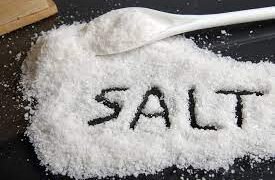A salt comprises the positive particle (cation) of a base and the negative particle (anion) of a corrosive. The response between a corrosive and a base is known as a balanced response. The term salt is likewise used to allude explicitly to normal table salt, or sodium chloride.
Types of salts:
Acidic salts,
Corrosive salts are a class of salts that produce an acidic arrangement in the wake of being disintegrated in a dissolvable. Its development as a substance has a more noteworthy electrical conductivity than that of the unadulterated solvent. An acidic arrangement shaped by corrosive salt is made during the incomplete balance of diprotic or polyprotic acids. A half-balance happens because of the excess of replaceable hydrogen iotas from the incomplete separation of powerless acids that poor person been responded with hydroxide particles (OH−) to make water atoms. Acid-base property of the resulting solution from a neutralization reaction depends on the remaining salt products. A salt containing reactive cations undergoes hydrolysis by which they react with water molecules, causing deprotonation of the conjugate acids.
Basic salts:
A basic salt is any salt that hydrolyzes to form a basic solution. Another definition of a basic salt would be a salt that contains amounts of both hydroxide and other anions. White lead is an example. It is basic lead carbonate, or lead carbonate hydroxide.
Antacid salts or essential salts will be salts that are the result of deficient balance of areas of strength for an and a frail corrosive.
Also if you want to know what are smelling salts then healthsectors.net provides you with this.
As opposed to being unbiased (as a few different salts), salt salts are bases as their name proposes. What makes these mixtures fundamental is that they form a base from the feeble corrosive hydrolyzes to shape an essential arrangement. In sodium carbonate, for instance, the carbonate from the carbonic corrosive hydrolyzes to shape a fundamental arrangement. The chloride from the hydrochloric corrosive in sodium chloride doesn’t hydrolyze, however, so sodium chloride isn’t fundamental.
The contrast between a fundamental salt and an antacid is that an antacid is the dissolvable hydroxide compound of soluble base metal or a soluble earth metal. An essential salt is any salt that hydrolyzes to shape a fundamental arrangement.
One more meaning of an essential salt would be a salt that contains measures of both hydroxide and different anions. White lead is a model. It is essential to lead carbonate, or lead carbonate hydroxide.
These materials are known for their elevated degrees of disintegration in polar solvents.
These salts are insoluble and are gotten through precipitation responses.
Neutral/normal salts:
Unbiased Salt: They are shaped by the balance areas of strength for and solid bases, and are called impartial salts in light of the fact that their watery arrangements are nonpartisan to litmus. Models: The mixtures like NaCl, KCl, K2S04, NaN03, KCl03, KClO4, and so forth are unbiased salts. At the point when a solid base responds with major areas of strength for a, a nonpartisan salt is framed. At the point when a solid base responds with a powerless corrosive, a fundamental salt is shaped. Numerous ionic mixtures display huge dissolvability in water or other polar solvents. Not at all like sub-atomic mixtures, salts separate in an arrangement into anionic and cationic parts. The cross-section energy, the durable powers between these particles inside a strong, decides the solvency. The dissolvability is reliant upon how well every particle interfaces with the dissolvable, so certain examples become clear. For instance, salts of sodium, potassium, and ammonium are normally solvents in water. Remarkable exemptions incorporate ammonium hexachloroplatinate and potassium cobaltinitrite. Most nitrates and many sulfates are water-dissolvable. Special cases incorporate barium sulfate, calcium sulfate (sparingly dissolvable), and lead(II) sulfate, where the 2+/2− matching prompts high grid energies. For comparable reasons, most metal carbonates are not dissolvable in water. Some dissolvable carbonate salts are sodium carbonate, potassium carbonate, and ammonium carbonate.







































































